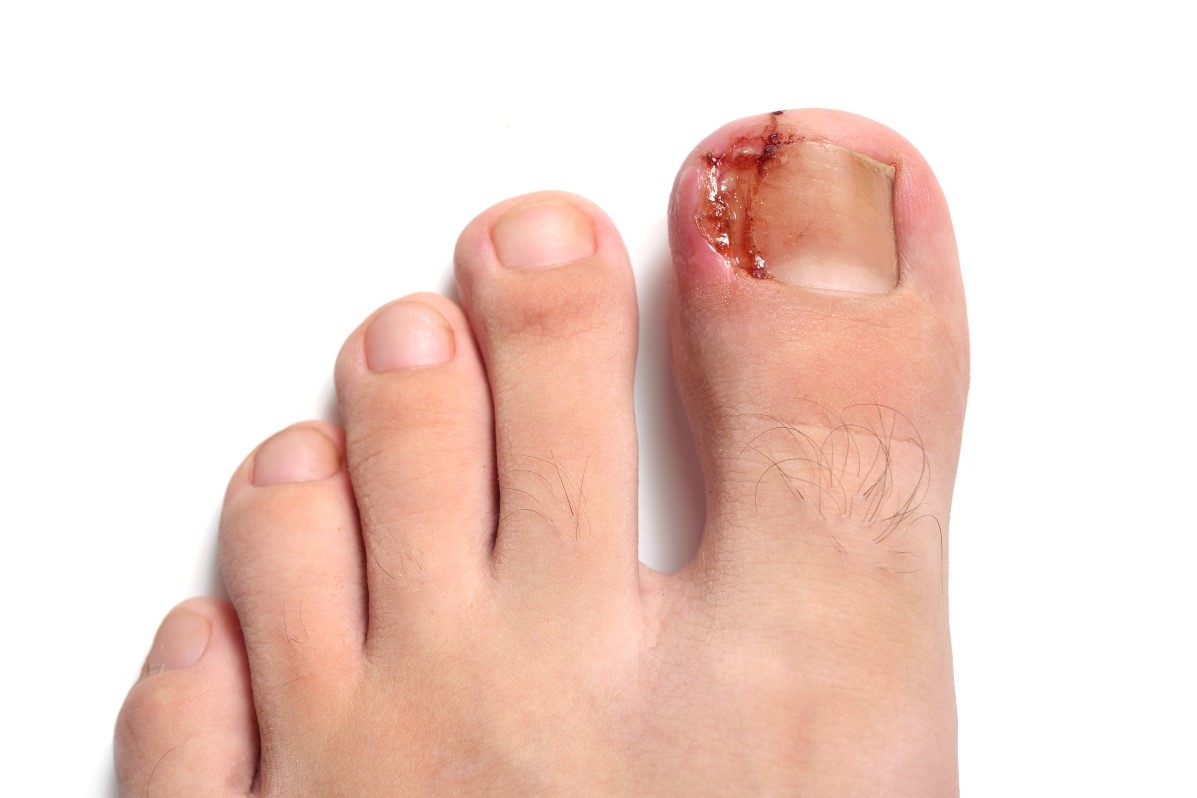
Ingrown toenail: what are the remedies?
Ingrown toenail is a very painful condition that can affect women and men indiscriminately and of any age
It is an inflammatory process that usually involves the big toe of the foot, but also other toes.
Causes of an ingrown toenail
The problem is caused by the nail breaking off and penetrating the periungual area.
Other causes underlying this pathology include an anatomical predisposition (typical of children or the elderly:
- having forced the foot into uncomfortable shoes;
- having cut the nail wrongly during a pedicure.
Symptoms
Stressing this area of the foot over and over again, with continuous pressure due to walking, can aggravate the condition and from mild discomfort, within a few days, there will be excruciating pain, due to the worsening of the inflammation.
Sometimes, on the other hand, the process is slower and less painful, until weeks after the nail breaks, it will grow out of place, changing its natural position and leading to a significant reddening of the area, with the presence of pus and sometimes, the formation of granuloma.
How to treat an ingrown toenail
Never underestimate the symptoms.
Intervening at the initial stage of the problem is an indication to follow to avoid the clinical picture evolving into something more serious.
At the onset of symptomatology, the podiatrist’s approach is conservative. After a thorough cleaning of the nail, he or she may assess whether to perform a non-invasive partial onychectomy, which consists in removing part of the nail (or specula) that is inserted on the lateral edge of the bed.
This is followed by a dressing based on zaffing (gauze placed between the nail and the edge), disinfectants and antibiotic creams, to be performed daily for more than a week.
The affected area will then be protected with a bandage or plaster to avoid possible contamination of germs and bacteria.
The recovery time is days, after which it will be possible for the patient to return to normal daily activities.
If, on the other hand, the clinical picture is acute and more complex, there is no choice but to intervene surgically with an invasive partial onychectomy, which consists of the partial extraction of the nail plate, so as to correct the nail growth.
Ingrown toenail, the intervention
The intervention can be performed
- traditionally surgically with local anaesthesia: the root of the nail affected by the ingrowth is partially removed (21/25 days of recovery and possible loss of the nail);
- by laser or phenolisation (using an acid substance, phenol): consists of partially necrotizing the nail root (7/8 days of recovery). This method has the advantage of being less invasive than the classic surgical method and allows the incidence of possible recurrences to be reduced, as well as the healing time, thanks to the absence of stitches.
After undergoing these types of operations, there are simple but important precautions to follow:
- avoid getting the foot wet;
- do not perform physical activity;
- use comfortable, wide-toed shoes.
Remedies at home
If you suffer from ingrown toenails, while waiting to see a specialist, you can follow a few tips to temporarily buffer the problem and avoid aggravating it:
- perform footbaths in cold water with euclorin and dry the area between the toes thoroughly to avoid stagnation of fluid and bacterial build-up;
- apply disinfectant lotions;
- keep the area clean and covered;
- avoid wearing uncomfortable, tight shoes.
Read Also:
Emergency Live Even More…Live: Download The New Free App Of Your Newspaper For IOS And Android
Onychophagia: My Child Bites His Nails, What To Do?
Russia, Doctors Detect Mucormycosis In Covid-19 Patients: What Causes The Fungal Infection?
Parasitology, What Is Schistosomiasis?
Onychomycosis: Why Do Fingernails And Toenails Get Fungus?


